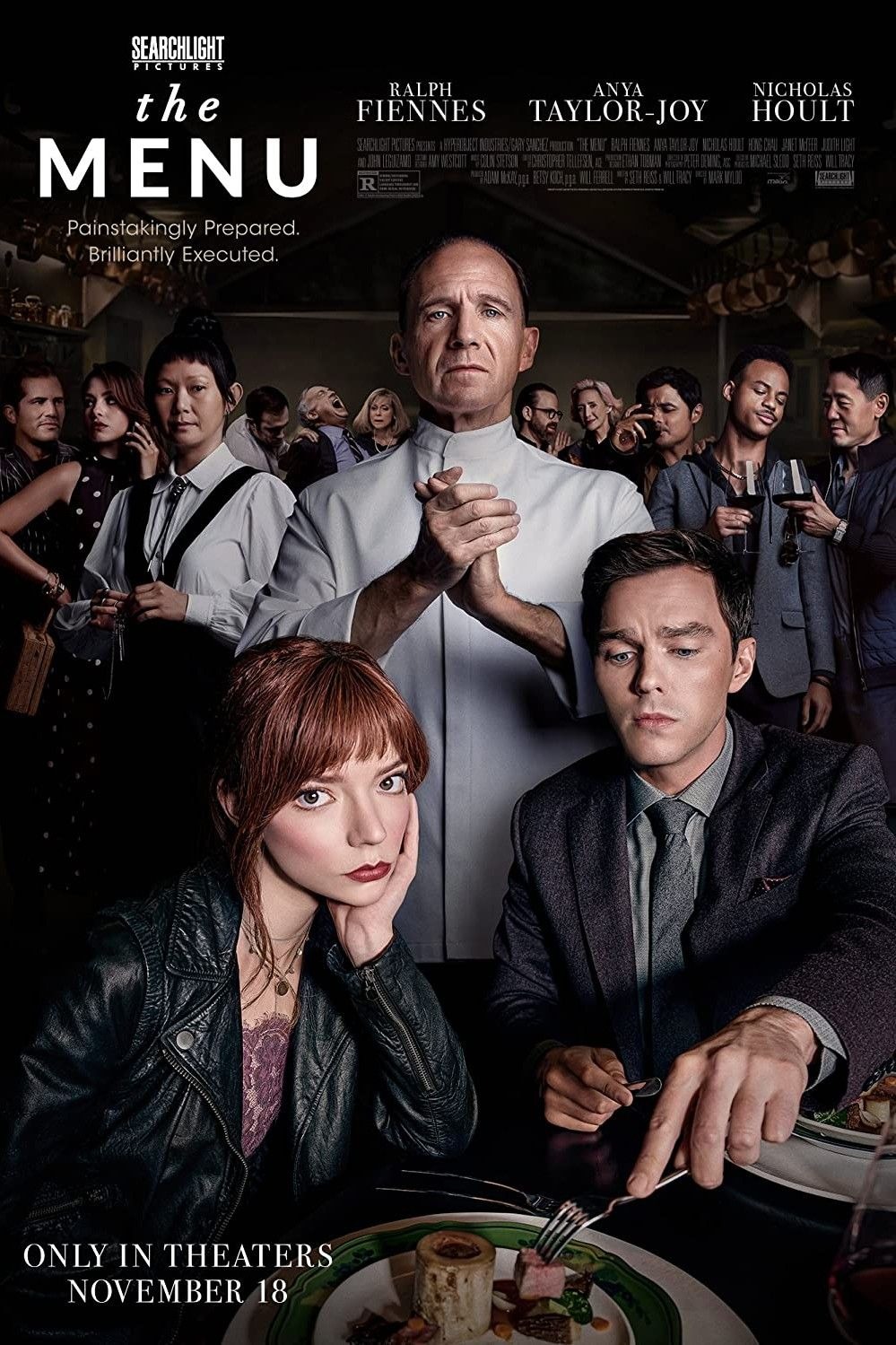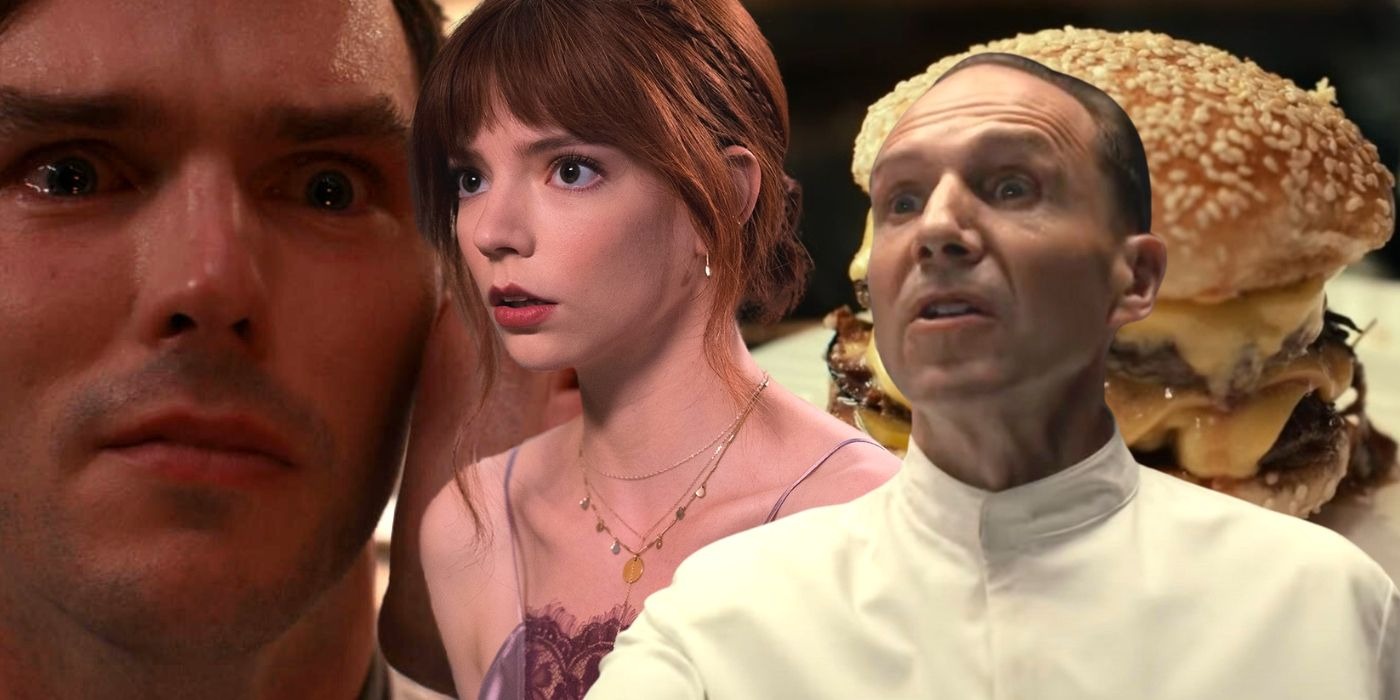Mark Mylod’s The Menu (review here), featuring Ralph Fiennes, Anya Taylor-Joy, Hong Chau, and Nicholas Hoult, has sparked extensive discussion. From food enthusiasts recreating its iconic cheeseburger and fries to speculations about its influence on the industry—like René Redzepi’s decision to shut down NOMA—it has left a lasting mark.
Recognized on numerous “best of 2022” lists, the film’s impact continues to grow, especially as awards season approaches. Yet, much of the conversation has missed the deeper thematic layers beyond the surface-level commentary on fine dining.

Some have compared The Menu to Ratatouille, but the connection is tenuous at best. While Remy in Ratatouille learns to abandon strict adherence to a master chef’s ideals to embrace his individuality, The Menu’s Chef Julian Slowik has already passed that point.
Played by Ralph Fiennes, Slowik harbors a deep resentment toward the fine dining world and plots to destroy everything, including those around him. His nihilistic worldview is far removed from the introspective journeys of Remy or even Anton Ego in Ratatouille.
In a pivotal moment, Margot, a last-minute guest and se*x worker brought by Tyler, a fanboy of Chef Slowik, challenges him to cook something he loves before enacting his destructive masterpiece.
Unlike the transformative moments in Ratatouille, this act does not change Slowik. Instead, the central idea revolves around rediscovering joy in providing service. The act of cooking the cheeseburger and fries evokes nostalgia not for Slowik’s childhood, but for the satisfaction of pleasing a customer.
The story doesn’t explore a transformative arc for Slowik; rather, the development lies with Margot. As the focal character, she evolves throughout the narrative, embodying the heart of the film.
Margot’s journey reflects her acceptance of her role in the service industry, using her expertise to grant Slowik one final moment of joy before his demise. Ironically, this occurs as he reverts to his roots as a humble line cook, delivering a perfect cheeseburger and fries in a doggy bag.

The connection between Slowik and Margot is underscored in two key interactions. Early on, Slowik confronts Margot in the restroom, questioning her lack of engagement with the food. His insistence that her indifference “wounds” him reveals his underlying desire to genuinely bring joy through his craft.
This interaction sets the stage for the film’s conclusion, illustrating Slowik’s buried passion for culinary service. Despite her guarded responses, Margot remains unafraid, standing firm against Slowik’s probing questions about her identity.
A later scene in Slowik’s office deepens their connection. Slowik acknowledges Margot as a kindred spirit in the service industry, someone who has lost their passion for their craft.
This moment of honesty and shared disillusionment foreshadows the finale, where Margot leverages this understanding to secure her freedom. Her journey intertwines with Slowik’s through a mutual recognition of the joy that once defined their professions.
The climactic cheeseburger scene symbolizes more than nostalgia; it represents a fleeting return to the fulfillment of serving others. Slowik’s disdain for his diners stems from their role in stripping him of this joy, with each guest embodying a grievance.
For instance, John Leguizamo’s “Movie Star” is resented for wasting one of Slowik’s rare days off with a poor film. These archetypes highlight the burdens placed on Slowik, culminating in his extreme plan to burn everything down—both figuratively and literally.



